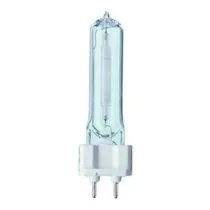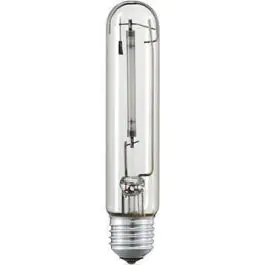Philips Compact Discharge Lamps (CDM)
The Philips range of Compact High Intensity Discharge lamps (CDM) utilises the same technology as HID lamps to provide a superior light output in a compact shape, while consuming only a fifth of the energy required by incandescent and tungsten light bulbs of the same wattage. Available with UV-filters to prevent the discolouration of objects, and with a superior colour rendering (CRI) compared to HID lamps, this range of energy efficient CDM light bulbs are ideal for use in general and decorative lighting and downlighting in retail displays and galleries. As with other high intensity discharge lamps, this range requires a ballast to function correctly.
Show more
Filter inCategory
Too much choice?
Help me choose!
1-24 out of 287
results found
Filter
Sort by
The Philips range of Compact High Intensity Discharge lamps (CDM) utilises the same technology as HID lamps to provide a superior light output in a compact shape, while consuming only a fifth of the energy required by incandescent and tungsten light bulbs of the same wattage. Available with UV-filters to prevent the discolouration of objects, and with a superior colour rendering (CRI) compared to HID lamps, this range of energy efficient CDM light bulbs are ideal for use in general and decorative lighting and downlighting in retail displays and galleries. As with other high intensity discharge lamps, this range requires a ballast to function correctly.
Show more
Compare Products
(/)
You can have up to 5 products in the comparison list.



 The colour code is a combination of colour rendering (CRI) and light colour (Kelvin). The first number indicates the colour rendering (1 = very poor colour rendering, 9 = maximum colour fastness). The second and third number contains the light colour. Example: the colour code 830 consists of good colour rendering (8) and warm white light (3000K).
The colour code is a combination of colour rendering (CRI) and light colour (Kelvin). The first number indicates the colour rendering (1 = very poor colour rendering, 9 = maximum colour fastness). The second and third number contains the light colour. Example: the colour code 830 consists of good colour rendering (8) and warm white light (3000K).
 Every bulb or fixture has an energy efficiency class A to G. Energy label A is the most efficient and G the least. LED lighting is the most sustainable lighting technique. Even if a LED bulb is rated E or lower, they still save 70% of energy compared to conventional lighting with the same energy label. Why is it the same label then? To motivate LED brands to get even more durable.
Every bulb or fixture has an energy efficiency class A to G. Energy label A is the most efficient and G the least. LED lighting is the most sustainable lighting technique. Even if a LED bulb is rated E or lower, they still save 70% of energy compared to conventional lighting with the same energy label. Why is it the same label then? To motivate LED brands to get even more durable.























